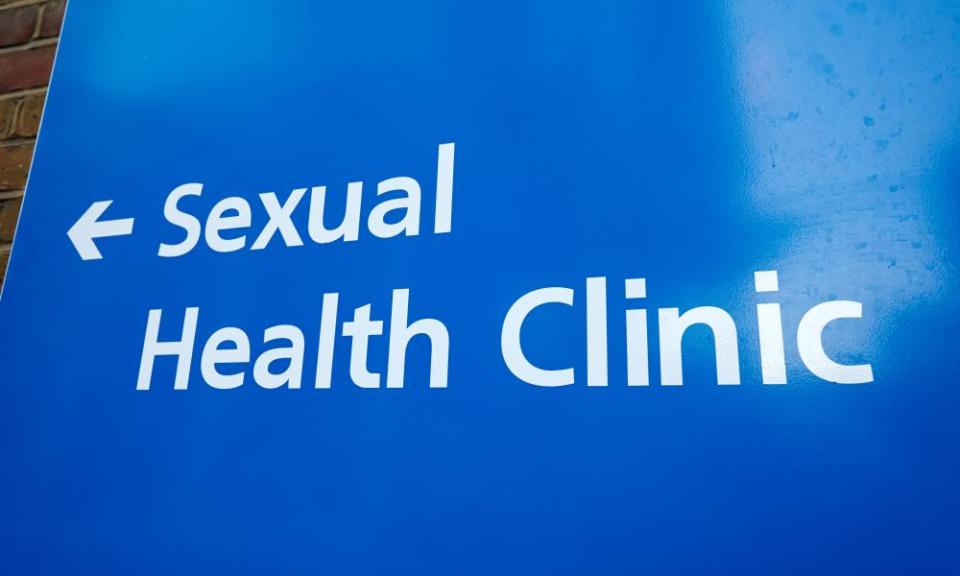Syphilis cases at highest level for 75 years in England last year

Cases of syphilis were at their highest level in 75 years in England last year while gonorrhoea cases increased by a record amount, figures show, amid concern over funding cuts to sexual health services.
The UK Health Security Agency (UKHSA) is urging people to use condoms, calling them “the best line of defence”, and advises people to go for a test if they have recently had unprotected sex.
The number of syphilis cases soared to almost 8,700 in 2022, the highest since 1948, while gonorrhoea diagnoses rose by 50% in just 12 months to 82,592 – the most since records began in 1918, according to the UKHSA figures.
In 2020 and 2021 there was a drop in the number of sexually transmitted infections (STIs) being diagnosed as lockdown meant fewer opportunities for sexual contact as well as a drop in sexual health screenings.
Related: Dangerous liaisons: why syphilis and gonorrhoea have returned to haunt Britain
In 2022 the number of sexual health screenings recovered to 2019 levels, but the figures show some STIs have now exceeded pre-pandemic levels, with gonorrhoea diagnoses up 16% compared with 2019 and syphilis diagnoses up 8%.
Overall, the number of STI diagnoses rose by 24% compared with 2021, from 317,000 to close to 392,500 at the end of 2022. However, the number is still 16% down compared with 2019.
The stark comparisons with historical figures for syphilis and gonorrhoea do not take into account the great strides in testing made during the latter half of the 20th century. The development of nucleic acid testing in the 90s meant accurate, low-cost tests became routine in the UK and are likely to have contributed to a sharp rise in gonorrhoea diagnoses in England after 2010.
Diagnosis rates of the most common STIs are highest among young people, with positive tests among 15- to 24-year-olds increasing by 29% compared with 2021. This is mainly due to the near doubling of cases of gonorrhoea, but levels are still 20% below the number of diagnoses recorded in 2019.
Overall rates of STI diagnoses have risen among all the age groups from 2021, but remain below pre-pandemic levels.
However, there is concern over the seemingly unstoppable rise of syphilis and gonorrhoea. This is partly thought to reflect the ubiquity of dating apps, which have enabled an increase in the number and frequency of sexual partners. The phenomenon of “chemsex” – drug-fuelled group sex where men have intercourse with men – is also a factor.
Added to this are fears demand for testing and treatment is outstripping service capacity. Sexual health budgets have fallen by 17% over the past decade, according to the Local Government Association (LGA). Health adviser posts in clinics have experienced cuts, as have outreach services working with high-risk groups such as sex workers.
“These new statistics continue to show that local council-commissioned sexual health services are at risk of breaking point, with rising demand coming at the same time as real-terms cuts to funding,” said David Fothergill, chair of the LGA community wellbeing board.
Claire Dewsnap, president of the British Association for Sexual Health and HIV, said: “This explosion in STI transmission rates comes at a time of deep and persistent cuts to the funding of sexual health services across the UK, as well as a lack of prioritisation or longer-term planning for the wider sexual health workforce.”
She added: “If funding continues to be directed away from public health, this worrying trajectory will likely only worsen.”
Dr Hamish Mohammed from the UKHSA said: “STIs aren’t just an inconvenience – they can have a major impact on your health and that of any sexual partners.
“Condoms are the best defence, but if you didn’t use one the last time you had sex with a new or casual partner, get tested to detect any potential infections early and prevent passing them on to others. Testing is important because you may not have any symptoms of an STI.”

 Yahoo News
Yahoo News 